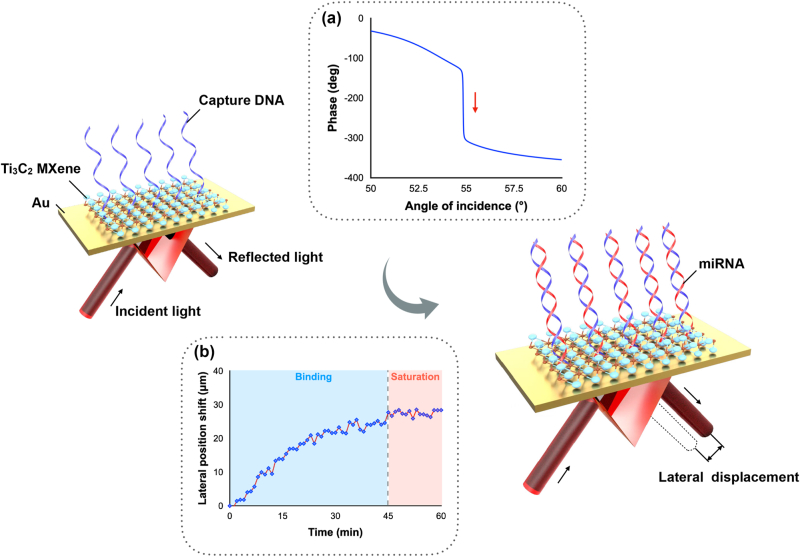Exploring MXene-enhanced Plasmonic Sensing for Ultrasensitive Label-free miRNA Detection
Date:27-10-2023 | 【Print】 【close】
microRNAs (miRNAs) are small non-coding RNA molecules that play an important role in the development and progression of various types of cancer, which makes it as biomarkers. The detection of miRNAs is of vital importance to the early-stage diagnostics and prognostics.
However, traditional detection strategies for miRNAs have faced the challenge, due to their intrinsic characteristics, such as small size, short sequence length, low concentration levels and high sequence homology in complex real samples.
Recently, a research group led by Prof. YANG Hui at the Shenzhen Institute of Advanced Technology (SIAT) of the Chinese Academy of Sciences has proposed an ultrasensitive MXene-enhanced plasmonic biosensor for real-time and label-free detection of miRNA.
The study was published in Nanophotonics on Oct. 11.
The researchers effectively exploited the unique properties of MXene to enhance the sensing performance of surface plasmon resonance (SPR) sensors. By spin-coating a thin layer of MXene nanosheets on the plasmonic substrate, the reflectivity can be significantly reduced, which results in a sharp phase change at the SPR angle. The sharp phase change will then induce a large lateral displacement signal, which greatly enhances the detection sensitivity.
Utilizing this biosensing approach, the researchers realized the ultrasensitive detection of target miRNA with a detection limit as low as 10 fM. More importantly, the sensing signal enables the facile differentiation of the target miRNA from the single-base mismatched miRNA. Furthermore, this plasmonic biosensor demonstrates the capacity to detect miRNAs in complex media such as undiluted human serum samples without compromising the detection sensitivity.
"Our biosensing technique provides a promising tool for the effective detection of miRNA and could evolve into a platform to detect a wide class of nano-objects, such as many other tumor biomarkers in clinical diagnosis, viral particles, or for monitoring synthesis and aggregation processes on a molecular level," said Prof. YANG.

Media Contact:
ZHANG Xiaomin
Email:xm.zhang@siat.ac.cn